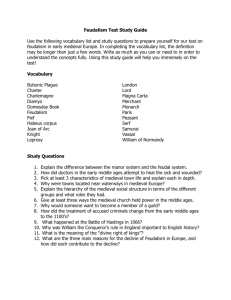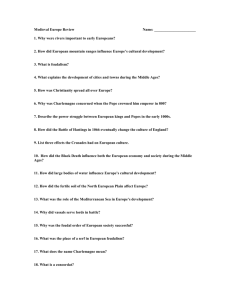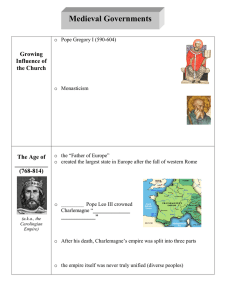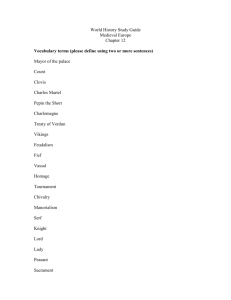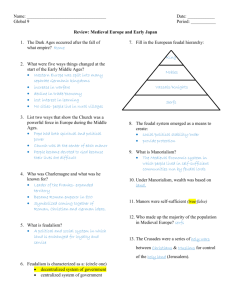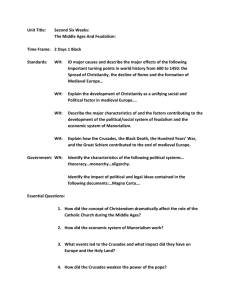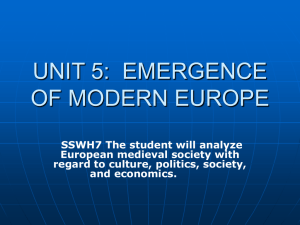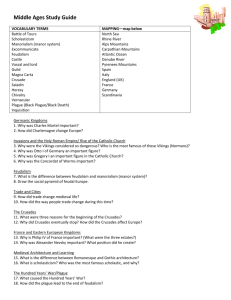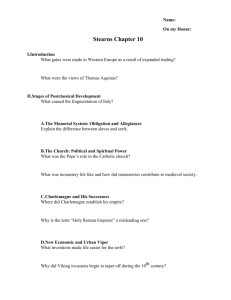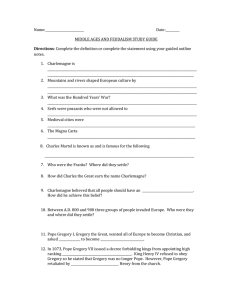HIST 001: Western Civilization
advertisement
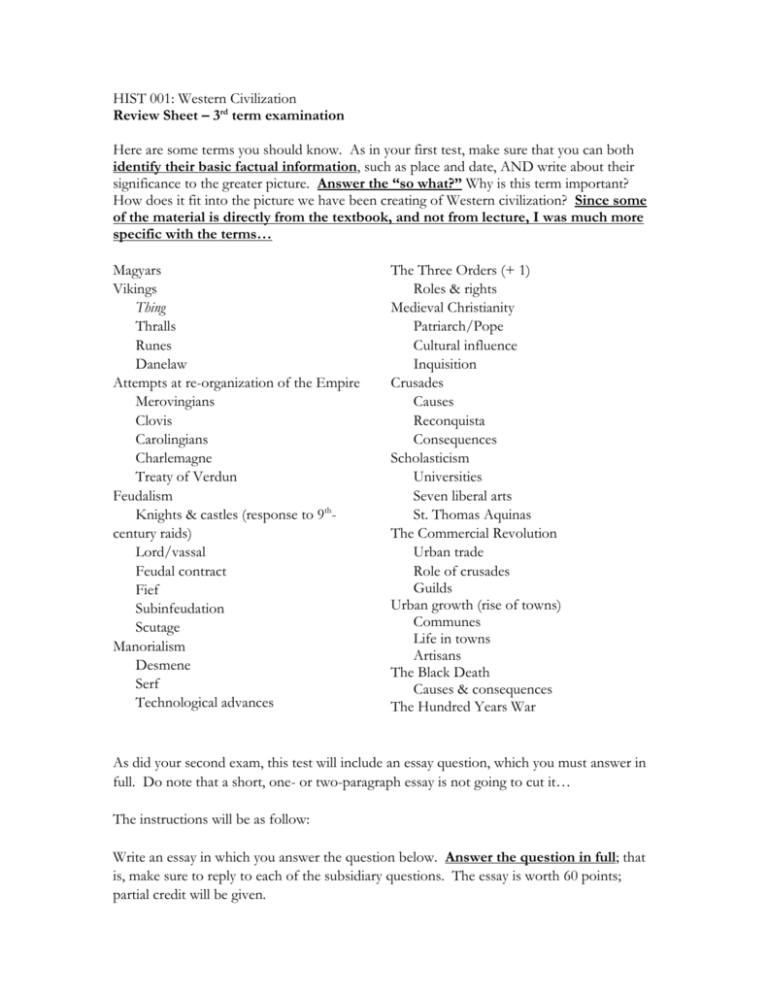
HIST 001: Western Civilization Review Sheet – 3rd term examination Here are some terms you should know. As in your first test, make sure that you can both identify their basic factual information, such as place and date, AND write about their significance to the greater picture. Answer the “so what?” Why is this term important? How does it fit into the picture we have been creating of Western civilization? Since some of the material is directly from the textbook, and not from lecture, I was much more specific with the terms… Magyars Vikings Thing Thralls Runes Danelaw Attempts at re-organization of the Empire Merovingians Clovis Carolingians Charlemagne Treaty of Verdun Feudalism Knights & castles (response to 9thcentury raids) Lord/vassal Feudal contract Fief Subinfeudation Scutage Manorialism Desmene Serf Technological advances The Three Orders (+ 1) Roles & rights Medieval Christianity Patriarch/Pope Cultural influence Inquisition Crusades Causes Reconquista Consequences Scholasticism Universities Seven liberal arts St. Thomas Aquinas The Commercial Revolution Urban trade Role of crusades Guilds Urban growth (rise of towns) Communes Life in towns Artisans The Black Death Causes & consequences The Hundred Years War As did your second exam, this test will include an essay question, which you must answer in full. Do note that a short, one- or two-paragraph essay is not going to cut it… The instructions will be as follow: Write an essay in which you answer the question below. Answer the question in full; that is, make sure to reply to each of the subsidiary questions. The essay is worth 60 points; partial credit will be given. Possible essay questions: 1. Charlemagne, a successful political ruler, was also the energy behind the Carolingian (9th century) renaissance. Discuss the cultural developments within the Frankish empire. What was the purpose for the cultural reforms? How did Charlemagne bring them about? Were they effective? If so how? 2. Needing protection from invading tribes, medieval people renounced their freedom and sought protection under a lord. Explain how feudalism shaped medieval life. How did this new system affect political life? How did peasants and knights respond to this new political framework? How did the new rulers respond? How did they consolidate their power? 3. Manorialism is an economic structure that emerged in connection with feudalism. Explain how manorialism evolved and how it shaped medieval life. What happened to peasants who came under this system? How did they live? How were they treated by the lords? Why was this system so intricately tied with feudalism? 4. With the fall of the Roman Empire, the Roman Latin Church became the single unifying factor of the medieval world. Was its position religious or political or both? Discuss the medieval church and its role in the medieval word. Was the role consistent or did it change over time? How did the church interact with the fragmented political structure? How did this effect the Christian religion?

